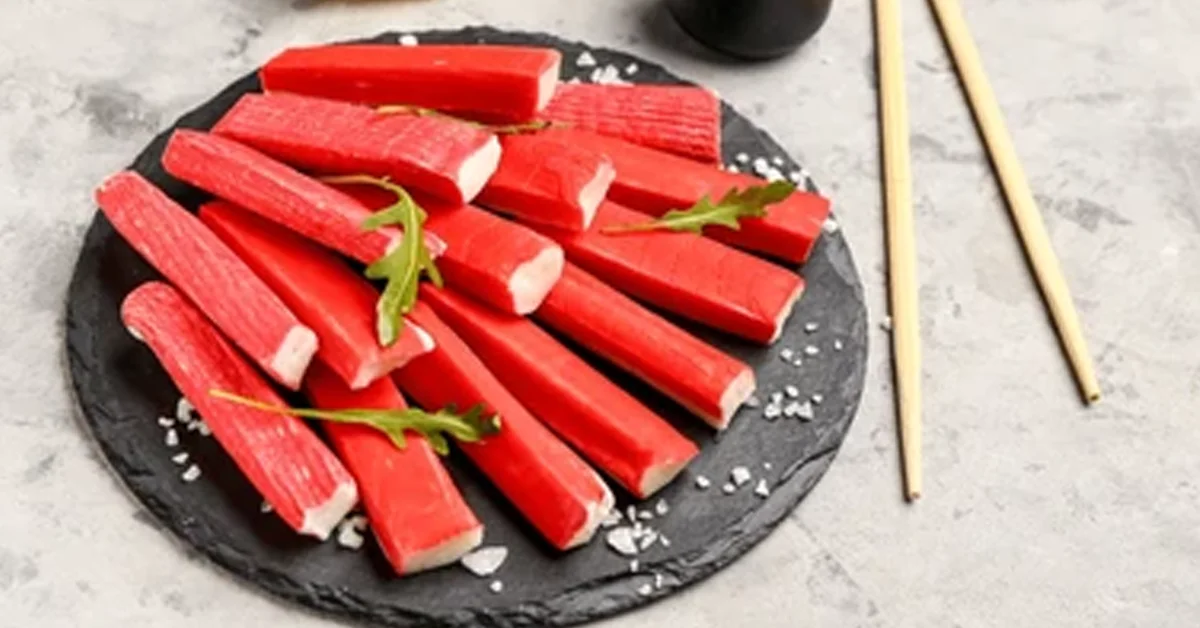Kanikama, commonly known as imitation crab, is a versatile seafood product that has gained popularity around the globe. With its delightful texture and flavor, Kanikama offers a delicious and cost-effective alternative to real crab meat. In this article, we’ll explore what Kanikama is, its benefits, culinary uses, and how to incorporate it into your meals.
ALSO READ: Delicious Farfalle Recipes: Elevate Your Pasta Game Today!
Table of Contents
ToggleWhat Is Kanikama?
Kanikama is a seafood product made from surimi, which is a processed fish paste primarily derived from white fish such as pollock. It is flavored and shaped to resemble crab meat, making it a popular choice for sushi, salads, and various dishes.
History of Kanikama
Kanikama originated in Japan in the 1970s as a way to utilize fish scraps. Since then, it has evolved into a global sensation, especially in North America, where it’s commonly used in sushi rolls and seafood salads. The word “kanikama” is derived from “kani,” meaning crab, and “kama,” meaning the stick or tube form.
Nutritional Benefits Of Kanikama
Kanikama is not only tasty but also offers several health benefits:
Low in Calories
Kanikama is relatively low in calories compared to real crab, making it a guilt-free option for those watching their weight.
Rich in Protein
Surimi is a great source of protein, which is essential for muscle repair and growth. Kanikama provides a substantial protein boost without the high fat content of some other seafood.
Omega-3 Fatty Acids
While it doesn’t contain as many omega-3 fatty acids as real crab, Kanikama still provides some healthy fats beneficial for heart health.
Gluten-Free
For individuals with gluten sensitivities or celiac disease, Kanikama is a gluten-free option, allowing them to enjoy seafood without worry.
Culinary Uses Of Kanikama
Kanikama’s versatility makes it suitable for various dishes. Here are some popular ways to enjoy Kanikama:
Sushi Rolls
Kanikama is a staple in sushi rolls, such as the California roll. Its texture mimics that of real crab, providing a satisfying bite.
Recipe: California Roll
- Ingredients:
- Sushi rice
- Nori (seaweed)
- Avocado
- Cucumber
- Kanikama
- Soy sauce (for dipping)
- Instructions:
- Prepare sushi rice and let it cool.
- Lay a sheet of nori on a bamboo mat.
- Spread a layer of sushi rice over the nori.
- Place sliced avocado, cucumber, and Kanikama in the center.
- Roll tightly and slice into pieces. Serve with soy sauce.
Salads
Kanikama can elevate any salad, adding a seafood flair without overpowering the dish.
Recipe: Kanikama Salad
- Ingredients:
- Mixed greens
- Cherry tomatoes
- Cucumber
- Kanikama
- Sesame dressing
- Instructions:
- Toss mixed greens, sliced tomatoes, and cucumbers in a bowl.
- Add Kanikama on top.
- Drizzle with sesame dressing and serve.
Soups
Add Kanikama to soups for a hearty, flavorful dish.
Recipe: Kanikama Miso Soup
- Ingredients:
- Miso paste
- Dashi broth
- Tofu
- Green onions
- Kanikama
- Instructions:
- Heat dashi broth in a pot.
- Stir in miso paste until dissolved.
- Add cubed tofu and Kanikama.
- Garnish with green onions before serving.
Sandwiches and Wraps
Use Kanikama as a filling for sandwiches or wraps for a quick and satisfying meal.
Recipe: Kanikama Sandwich
- Ingredients:
- Bread or wrap
- Lettuce
- Tomato
- Mayonnaise
- Kanikama
- Instructions:
- Spread mayonnaise on the bread or wrap.
- Layer with lettuce, tomato, and Kanikama.
- Close and enjoy!
Storage And Shelf Life of Kanikama
Kanikama has a relatively long shelf life. Here are some tips for proper storage:
Refrigeration
Store unopened Kanikama in the refrigerator, where it can last for up to a few weeks. Once opened, consume it within a few days.
Freezing
For longer storage, Kanikama can be frozen. Make sure to wrap it tightly to prevent freezer burn. It can last for up to six months in the freezer.
Environmental Impact
Choosing Kanikama over real crab can also be a more sustainable option. The fishing of crab can lead to overfishing and environmental degradation. Kanikama, made from fish that are often more abundant, provides a way to enjoy seafood while being mindful of ecological impacts.
Conclusion
Kanikama is a delicious, versatile, and budget-friendly seafood option that can elevate any meal. Whether you’re making sushi, salads, or hearty soups, Kanikama is sure to impress. Its nutritional benefits and sustainability make it an appealing choice for health-conscious and environmentally aware consumers alike. So, the next time you’re looking to add a seafood flair to your dish, consider reaching for Kanikama!
ALSO READ: Explore Turron: The Sweet Spanish Delight You Must Try
FAQs
What is Kanikama?
Kanikama, or imitation crab, is a seafood product made from surimi (processed fish paste) flavored and shaped to resemble crab meat, primarily made from white fish like pollock.
Is Kanikama healthy?
Yes, Kanikama is low in calories and rich in protein, making it a healthy option for many. It is also gluten-free, which is beneficial for those with gluten sensitivities.
How do you cook Kanikama?
Kanikama is pre-cooked and can be eaten straight from the package. It can also be added to dishes like salads, soups, and sushi rolls for added flavor and texture.
Can I freeze Kanikama?
Yes, Kanikama can be frozen for up to six months. Make sure to wrap it tightly to prevent freezer burn.
What dishes can I make with Kanikama?
Kanikama is versatile and can be used in various dishes, including sushi rolls, salads, soups, and sandwiches. Its flavor and texture make it a delightful addition to many recipes.

